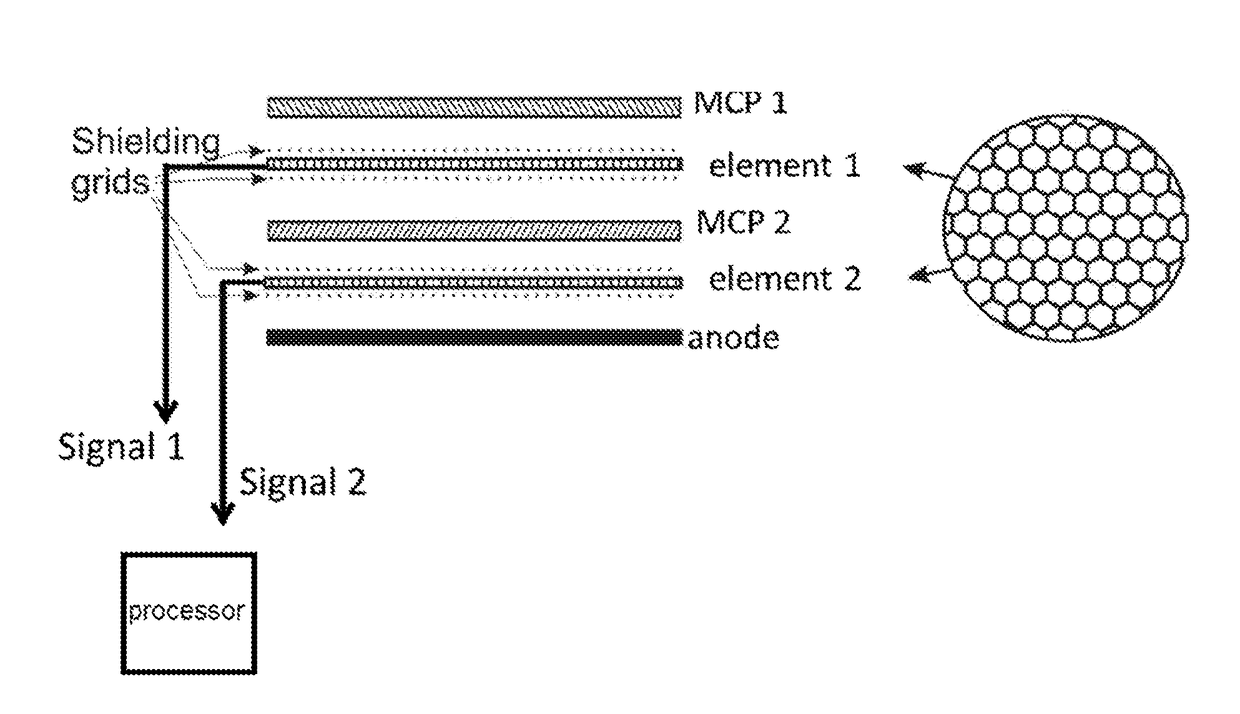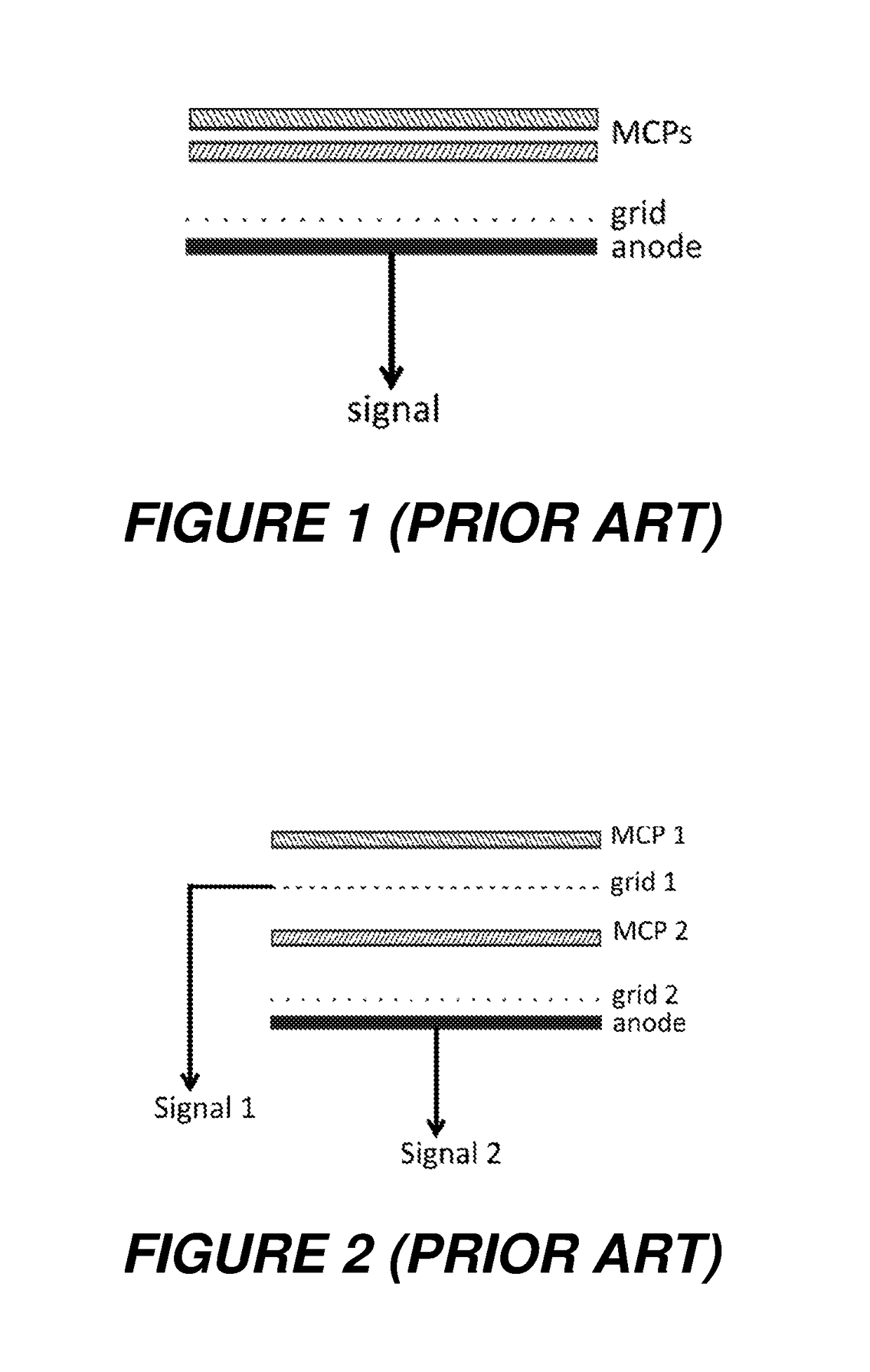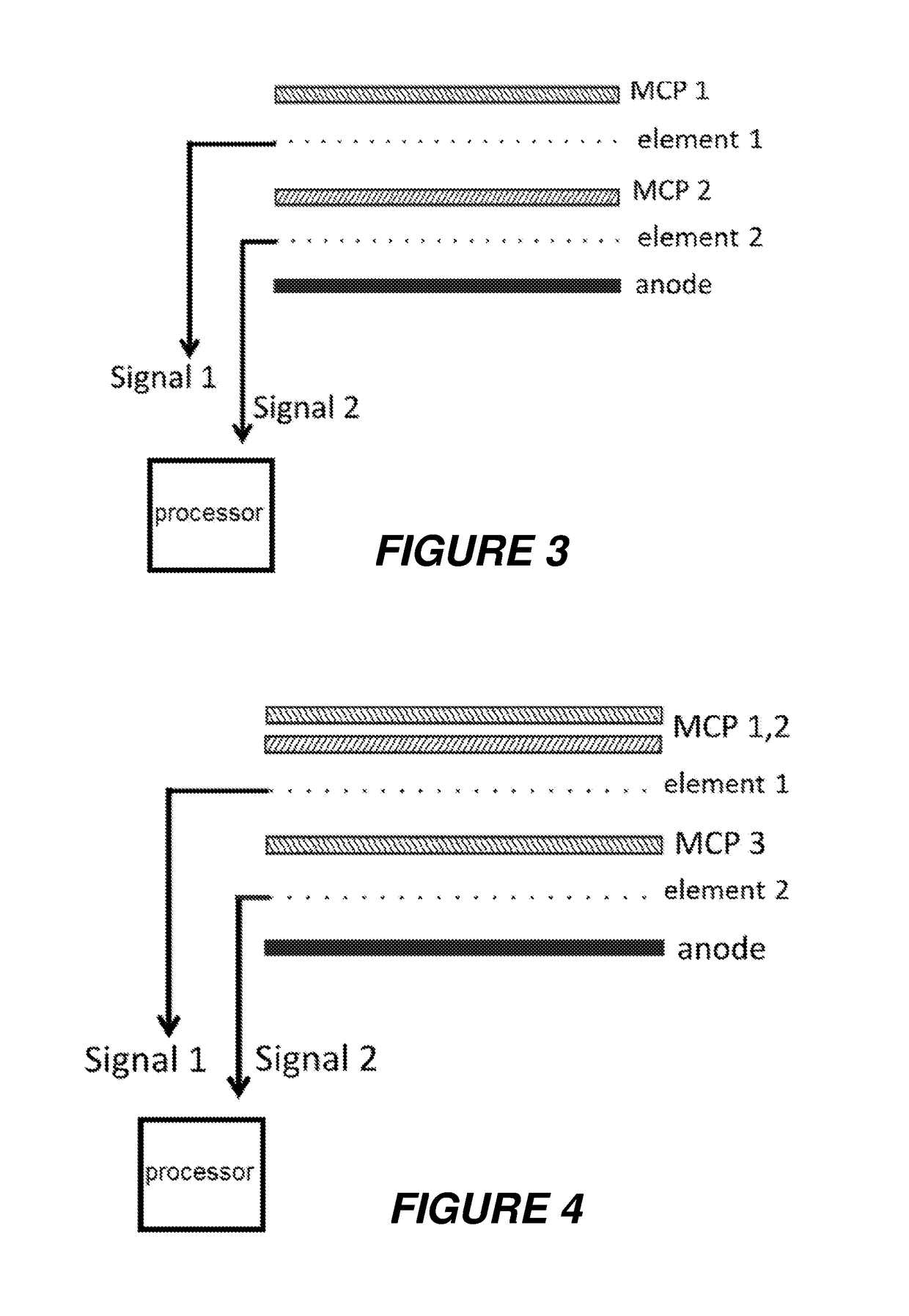High dynamic range ion detector for mass spectrometers
a mass spectrometer and dynamic measurement technology, applied in the direction of electron/ion optical arrangement, particle separator tube details, electron/ion sources, etc., can solve the problem that the dynamic range of the digitizer is insufficient for the analytic task, the mcp cannot maintain a gain of 1000 electrons, and the linear dynamic measurement range of the amplifying and digitizing device is limited, so as to achieve high transmission factor and high open area ratio. the effect of high aspect ratio ratio ratio ratio ratio ratio ratio ratio ratio ratio ratio ratio ratio ratio ratio ratio ratio ratio ratio ratio ratio ratio ratio ratio ratio ratio ratio ratio ratio ratio ratio ratio ratio ratio ratio ratio
- Summary
- Abstract
- Description
- Claims
- Application Information
AI Technical Summary
Benefits of technology
Problems solved by technology
Method used
Image
Examples
Embodiment Construction
[0027]While the invention has been shown and described with reference to a number of different embodiments thereof, it will be recognized by those of skill in the art that various changes in form and detail may be made herein without departing from the scope of the invention as defined by the appended claims.
[0028]In FIG. 3, two grid-like detection elements are placed before and after the second MCP 2 of an arrangement that would normally be used in an MCP detector. The detection elements may, for example, be configured for 90% transmission so that 90% of the electrons from the first MCP pass through detection element 1 and strike MCP 2 for further amplification. The electrons produce in detection element 1 an image current called “signal 1”. Electrons from MCP 2 pass through detection element 2 and produce an image current called “signal 2”. (See, for instance, M. A. Park and J. H. Callahan, Rapid Com. Mass Spectrom. 8 (4), 317, 1994). The passing electrons are neutralized at the a...
PUM
 Login to View More
Login to View More Abstract
Description
Claims
Application Information
 Login to View More
Login to View More - R&D
- Intellectual Property
- Life Sciences
- Materials
- Tech Scout
- Unparalleled Data Quality
- Higher Quality Content
- 60% Fewer Hallucinations
Browse by: Latest US Patents, China's latest patents, Technical Efficacy Thesaurus, Application Domain, Technology Topic, Popular Technical Reports.
© 2025 PatSnap. All rights reserved.Legal|Privacy policy|Modern Slavery Act Transparency Statement|Sitemap|About US| Contact US: help@patsnap.com



